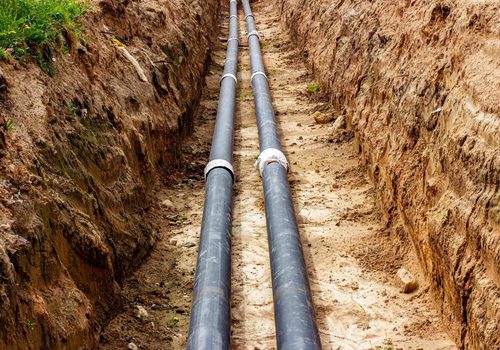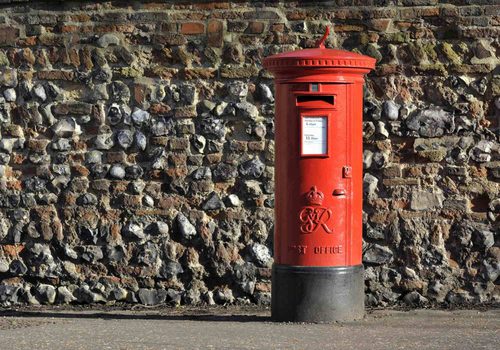Getting a water supply for your new home is essential. The work involved will take some careful planning, so here’s our guide to help you prepare.
There are two aspects to your water connection: supply and sewage collection. Many of the water companies in England and Wales handle both, while the remaining providers use a partner company for their sewage services. This could mean that you pay multiple monthly bills rather than one. All of these companies are regulated by the government watchdog for water services, Ofwat, to make sure you are getting the level of service you’re entitled to. If you’re in Scotland, you will be serviced by Scottish Water instead, which is a publicly owned company.
Before you apply
Firstly, you need to work out whether there has previously been a water connection on site. If this information isn’t readily available when you buy the plot, you will need to arrange for a CON29DW drainage and water enquiry report (usually around £45). This will show any historical water sources and will also highlight your nearest water main. Even if there is a previous connection (if you’re developing a brown field site or creating a replacement dwelling, for instance), this isn’t necessarily a good thing as it may have deteriorated badly over time or might not be suitable.
Typically, the water metre is located on public land near your boundary. Any infrastructure beyond that (like the pipes that transport the water across your land to your home) are your responsibility. So, if a new connection does need to be made or an existing one needs to be upgraded, that part of the work will be up to you and your contractors.
There are certain pieces of information that will make applying for a new connection run more smoothly:
- Work out whether there are any water main pipes crossing your land and make sure that they are sufficiently far away from where you’re planning to build
- Find your nearest water main
- Work out your usage requirements and distance from the water main - these are the things that will decide the size of pipe you need. A plumber or service engineer can guide you
- If you’re going to need access to land owned by someone else to establish your connection, you’ll need their permission. Make sure you have any necessary wayleaves in place
- Establish when you’ll need the connection by and how it will fit in with other work on site.
You may need to consider a temporary connection for the construction process too. Under these circumstances, a standpipe is often set up just beyond the site boundary.
Water supply application process
You’ll be able to make an application online. The provider will then visit the site to assess the requirements, accounting for factors like the location of the main in relation to your boundary and any road traffic management issues.
Typically, it takes between 14 and 28 days to receive a quote after you put in the application. You’ll have three months to pay the fee in full, which confirms the order. If you don’t, you’ll have to start the process again.
After you apply
You now need to do the necessary work on your own site, which involves laying a pipe of the correct specification from the boundary to your new house. The work needs to be completed and approved within three months or your money will be refunded, and you’ll have to begin the process again.
The pipe must be laid 750mm deep and surrounded by 75mm of soft sand. It should emerge 750mm from the foundations outermost edge, achieved by creating a ducted radius inside the foundation wall. The pipe also needs to be insulated and the ends of the ducts sealed.
You can use an approved plumber who will do the work to the required standard. They will then notify the water company that it has been done correctly by filling out an official certification. If you are doing the work another way, you’ll have to invite the provider to inspect the open trench before you begin to backfill it. That should take them 7 days or so.
Once your pipe has been inspected and approved, it will take a further 21 days for the work of mains connection and metre installation to happen. There could be delays though, particularly if there are issues with traffic management.
Once the team are on site, the connection should hopefully be finished within 2 to 4 days, providing there aren’t any complicating factors. Your water will then be live, and you’ll be able to isolate it with a valve by the metre or with the house’s stopcock.
How much will it cost to get connected to water?
This is impossible to predict as your quote will depend on the individual factors and requirements that come up during the site survey. As well as the costs to make the physical connection, you’ll need to cover any necessary traffic management, any unmetered water you used during construction and a water infrastructure charge (which helps with the upkeep of the system).



